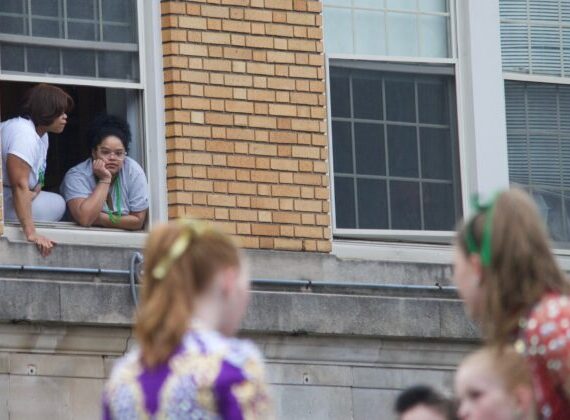 Books about urban development and growing community are often written in jargon, making the content inaccessible to the general public.
Books about urban development and growing community are often written in jargon, making the content inaccessible to the general public.
That choice in language says for whom the knowledge is intended. It says who is expected to do anything with it.
Better Together is different.
Emphasized in almost every chapter is the need for the people, for the residents, to be involved. Echoing this, it is written in plain language.
But it’s not an instruction manual. Showcased are places where community already exist, ways that empowerment of individuals has provoked social change, and where setbacks have occurred. A recurring theme is the empowerment of people who may be viewed and view themselves as powerless, such as youth, blue collar workers, and the very poor.
Published in 2003 during a time when many were struck with alienation following the militaristic response to 9/11, Better Together maintains its relevance.
In the chapter about branch libraries in Chicago, Robert D. Putnam and Lewis M. Feldstein explore how the role of the public library has changed. While there remain some folks who expect libraries to only be places of silence, where patrons gather books and then read them, most understand that for this center of civic life to thrive, it needs to evolve with the times. They write, “the new library is an active and responsive part of the community and an agent of change.” The space is unique because it is considered “neutral,” “the least threatening public institution,” and acts as a “third place.”
Every so often, the anxiety over the changing library does emerge. The authors address this: “Buried in the death-of-the-library prediction is that false assumption that ‘everybody’ has a computer at home, along with, probably, a parallel assumption that ‘everybody’ can afford to buy books.” What the library must do is fulfill the requests of patrons. Complaints about offensive or poorly written materials are often made, yet these items find their way into the stacks because of customer demand. If one library provides ample computer access, it can be assumed that many patrons lack computers, certain programs, and/or Internet at home. If ESL classes are provided, it is because of demand.
That’s an early lesson in the book: people, regardless of income, have the power to place demands on public institutions.
This is shown with the story of Lupita Torres, a resident of the Rio Grande Valley who decided that her barrio with “no paved street, no streetlights,” which had a section “filled with dead animals and old cars” needed fixing. After boldly calling out the mayor for hesitating to budget, she and her group took him and other officials on a tour of the city. In the end, the neighborhood received vast improvements to its infrastructure.
No voting required, just the willingness to demand accountability.
In total, there are twelve chapters focusing on different forms of social connection across the United States, from Chicago to Portland to virtual spaces.
Better Together is available at the Hartford Public Library.

Jennifer S.
YES!!! Completely agree with the part about libraries. Thank you for this review!
Kerri Provost
Thanks! I had already written this when that discussion happened on Twitter about the library. This is actually something I was assigned to read for work. Not a bad gig!
Jennifer S.
Sweet! Enjoy that gig. 🙂
Kerri Provost
I should add…I delayed publication to ensure the book was back in the library before people read this.
Matt Poland
Kerri: thanks for your post.